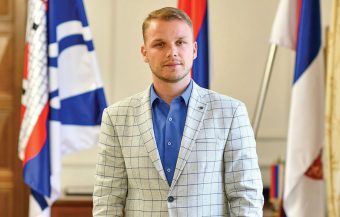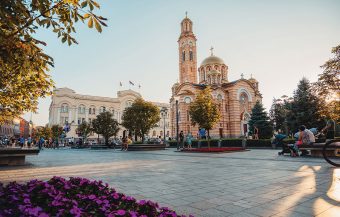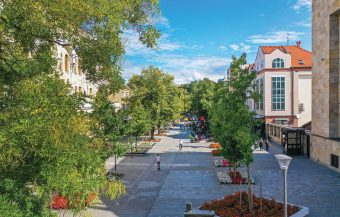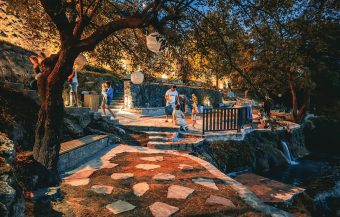
The City of Banja Luka’s Development Strategy stipulates priority activities that reflect the local government’s aspirations to make Banja Luka an ecologically sustainable, communally well-equipped, energy-efficient and safe environment, i.e. for Banja Luka to transform into a Green City. This concept implies creating more urban green areas, parks, and recreational zones, regulating the banks of the Vrbas River and its tributaries and managing natural resources responsibly and creatively. The Strategy’s draft also considers aesthetic and functional aspects, focusing on environmental protection. The local government is investing a lot of effort into creating inspiring, top-quality amenities in public spaces to enable better interaction, engagement, and health care for residents. In other words, making residents feel as good as possible in the environment they live in, says Draško Stanivuković, mayor of Banja Luka.
“Accomplishing all the goals outlined in the green city concept would contribute to its better-integrated development, better quality of communal services, energy savings and more attractive appearance. Banja Luka’s goal is to be a good example of a town with an innovative, smart, and sustainable utility and traffic infrastructure supported by an efficient land use system and increased resistance to climate change and other natural disasters. With a healthy and dynamic environment, the green and blue infrastructure network will protect and improve water resources, soil quality and biodiversity, but also maintain Banja Luka’s reputation as a green city.”
Q: What are the most favorable models for financing projects aimed at boosting energy efficiency? How much did you invest in such projects, and what results have you accomplished?

A: Banja Luka aspires to be an energy efficiency leader in Bosnia and Herzegovina and in the application of modern financing models. We launched several projects in this area and invested significant funds. Among the more significant projects is the public lighting managing and monitoring system, which has been implemented at more than 480 measuring points. In several stages, about 5,000 old light fixtures were replaced with LED ones, with a total value of about 563,000 euros (1,100,000 KM) and the project was implemented in cooperation with the UNDP. The city government will continue carrying out activities on the modernization of the public lighting system to reduce electricity consumption. Considering that there are about 30,000 light fixtures in Banja Luka, of which about 25,000 are old, that use high-pressure sodium, metal-halide, and mercury sources, with these new state-of-the-art LED ones, we will manage to reduce energy consumption and the emission of harmful gases. But first, we need to carry out energy-saving renovation, which includes the renovation of the infrastructure and the replacement of more energy-efficient lamps, as well as the application of light intensity regulation measures, which will achieve significant savings.
IN FOCUS:
- NOVI SAD STEPS INTO THE WORLD OF ELECTROMOBILITY
- THE PATH TO THE DEVELOPMENT OF E-MOBILITY
- ENERGY REHABILITATION CONTRIBUTES TO ENERGY SAVING AND ENVIRONMENTAL PROTECTION
Thanks to the existing system, the city authorities allocate about 1,250,000 euros annually to maintain public lighting and electricity costs. With the increase in the price of electricity, these costs amount to approximately 1,800,000 euros. By replacing all lighting fixtures with more energy-efficient ones, electricity consumption could be reduced by more than 65 per cent, and total costs would be reduced by around 500,000 euros.

Furthermore, with the construction of the Banja Luka eco-heating plant, which uses biomass instead of fuel oil for district heating, we have started drafting the Feasibility Study on the modernization of the district heating system and the implementation of renewable energy sources, which the European Bank is carrying out for Reconstruction and Development (EBRD). We plan to carry out the automation of substations in the district heating system, reconstruct the existing grid, and construct a new one. Individual investment activities will be implemented by the Banja Luka eco-heating plant and then via contracts with investors. Plus, several school and preschool facilities were renovated in the past period, too.
Q: How much do you invest in boosting the energy efficiency of residential buildings?
A: Under the auspices of the Decarbonization in the Housing Sector of Bosnia and Herzegovina project, which is financed by Sweden and implemented by the United Nations Development Program (UNDP) in partnership with the Banja Luka government, we have started drafting the Energy Efficiency Study of the entire housing sector. The Study’s goal is to provide key tools that will enable the development and establishment of efficient and effective policies and financing mechanisms that will promote significant growth in investments in boosting the energy efficiency of the housing sector. The main goal is to develop an energy efficiency study of the entire residential sector in the city, based on a sample of 400 individual houses and 30 residential buildings.
For several years, the city authorities have been co-financing works on rehabilitating the facades of residential buildings, with the expected reduction of energy consumption in the amount of at least 30 per cent. So far, the facades of eight collective housing buildings have been successfully restored, and following a new public call for submission of bids, the plan is to restore 12 more buildings in the city. The total value of the investment amounts to slightly over 511,291 euros, of which the city authorities have allocated more than 255,000 euros.
Q: What priority projects that contribute to enhancing environmental protection have you been implementing?

A: Banja Luka is one of the leading local self-governments in environmental protection in the Republic of Srpska, according to the auditor general. Following the relevant regulations, we regularly draft all planning documents and implement them in accordance with the available budget. We monitor air pollution and noise. We have an organized waste collection system, which covers as much as 95 per cent of the total city territory (urban and rural parts). Every year, we implement the Clean Face of the City campaign, during which citizens can dispose of bulky waste at the expense of the local authorities. We are especially proud that we have cleaned watercourses of waste and that our citizens are increasingly developing awareness and throwing less waste into riverbeds and streams. The city government also supported the Spatial Healing project to prevent the creation of illegal landfills by erecting artistic sculptures and developing green areas instead. Sculptures and ornamental plants were put in several locations in the city area in place of unregulated landfills.
The plan is also to build three recycling facilities in the city area, which aim to reduce the amount of waste deposited at the regional landfill and increase the opportunity for recycling. Recycling is one of the projects we will deal with more in the coming period. Furthermore, thanks to the construction of a large city park, green oases, children’s playgrounds, river promenades and outdoor gyms, which are all aesthetic and functional contributions to the city, we are also striving to do what we can to protect and improve the environment and space.
The drafting of the Wastewater and Solid Waste Management Study, financed by the European Investment Bank (EIB), is also underway, and the study should have been completed by May 2024. We are also planning to launch a tender for the rehabilitation and expansion of the regional landfill in Ramići.
Interviewed by: Mirjana Vujadinović Tomevski
Read the story in the new issue of the Energy portal Magazine CIRCULAR ECONOMY.



